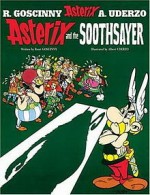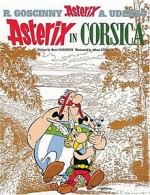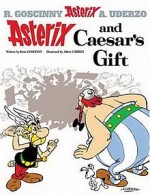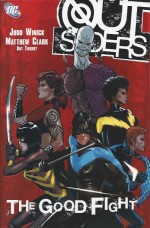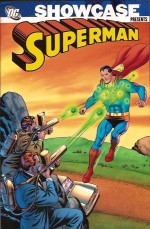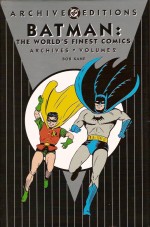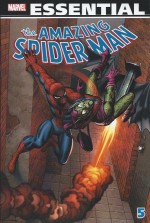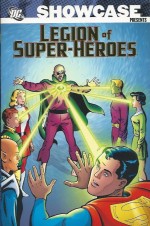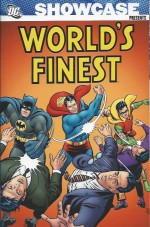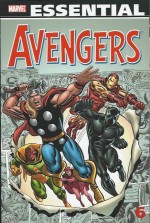
By Steve Englehart, Roy Thomas, Jim Starlin, Gerry Conway, Bob Brown,
Don Heck, Dave Cockrum, Joe Staton, Rich Buckler, John Buscema, George Tuska & various (Marvel)
ISBN: 978-0-7851-3058-1
The Avengers have always proved that putting all one’s star eggs in a single basket pays off big-time: even when all Marvel’s classic all-stars such as Thor, Captain America and Iron Man are absent, it merely allows the team’s lesser lights to shine more brightly.
Of course all the founding stars were regularly featured due to the rotating, open door policy which means that most issues includes somebody’s fave-rave – and the boldly grand-scale impressive stories and artwork are no hindrance either.
This monolithic and monumental sixth tome, collecting the ever-amazing Avengers‘ world-saving exploits (presenting in crisp, stylish monochrome the astounding contents of issues #120-140 of their monthly comic book between March 1974 and October 1975, plus Giant-Size Avengers #1-4 and crossover appearances in Captain Marvel #33 and Fantastic Four #150), saw scripter Steve Englehart examine the outer limits of Marvel history and cosmic geography as he took readers to the ends of their universe and the beginning of time…
Opening this epochal tome is ‘Death-Stars of the Zodiac!’ from Avengers #120, by Steve Englehart, Bob Brown & Don Heck, wherein terrorist astrological adversaries and super-criminal cartel Zodiac attacked again with a manic plan to eradicate everyone in Manhattan born under the sign of Gemini, with heroes Thor, Iron Man, Vision, Scarlet Witch, Swordsman and Mantis seemingly helpless to stop them.
In the blistering battle of #121’s ‘Houses Divided Cannot Stand!’, illustrated by John Buscema & Heck, even the added assistance of Captain America and the Black Panther is of little advantage and with Mantis injured the team begin to question her mysterious past, only to be lured to their seeming doom and ‘Trapped in Outer Space!’ (Brown & Mike Esposito) before at last turning the tables on their fearsome foes after the criminal Libra revealed a shocking secret…
Avengers #123, depicted by Brown & Heck, began a vast and ambitious saga with ‘Vengeance in Viet Nam – or – An Origin For Mantis!’ as Libra’s claim to be Mantis’ father (a story vigorously and violently denied by the Martial Arts Mistress) brought the team to Indo-China.
The criminal ex-mercenary declared that he left the baby Mantis with pacifistic Priests of Pama after running afoul of a local crime-lord, but the bewildered warrior-woman has no memory of such events, nor of being schooled in combat techniques by the Priests. Meanwhile the gravely wounded Swordsman has rushed to Saigon to confront his sadistic ex-boss Monsieur Khruul and save the Priests from being murdered by the gangster’s thugs… but was again too late. It is the tragic story of his wasted life…
Issue #124 found the team stumbling upon a scene of slaughter as clerics and criminals lay dead and a monstrous planet-rending alien horror awoke in ‘Beware the Star-Stalker!’ by J. Buscema & Dave Cockrum…
Mantis was forced to accept that her own memories were not real after Avengers #125, which unleashed ‘The Power of Babel!’ when a vast alien armada attacked and, in combating it, the Earth’s Mightiest Heroes were trapped out of phase with their home-world.
This blockbuster battle bonanza was a crossover, and the penultimate episode of the spectacular Thanos War Saga that had featured in Captain Marvel, Marvel Feature and Iron Man, and included in this compendium is ‘The God Himself!’ scripted by Englehart from Captain Marvel #33 (plotted and illustrated by Jim Starlin & Klaus Janson) wherein the mad Titan Thanos finally fell in combat to the valiant Kree warrior: a stunning piece of comics storytelling which stands up remarkably well here despite being seen without benefit of the preceding ten chapters…
It was back to business in #126 as in ‘All the Sights and Sounds of Death!’ (Brown & Cockrum) villains Klaw and Solarr attacked Avengers Mansion in a devious attempt to achieve vengeance for past indignities, after which Roy Thomas, Rich Buckler & Dan Adkins returned to the fold to delve into superhero history with ‘Nuklo… the Invader that Time Forgot!’ for the first quarterly edition of Giant-Size Avengers.
The stirring saga reintroduced 1940 Marvel sensation Bob Frank AKA The Whizzer in a tragic tale of desperation as the aged speedster begged the heroes’ help in rescuing his son: a radioactive mutant locked in stasis since the early 1950s. Unfortunately within the recently unearthed chrono-capsule the lad has grown into a terrifying atomic horror…
Moreover while in the throes of a stress-induced heart-attack the Whizzer let slip that he was the also the father of mutant Avengers Scarlet Witch and Quicksilver…
In Avengers #127 Sal Buscema & Joe Staton signed on as regular art team with ‘Bride and Doom!’ when the team travelled to the hidden homeland of the Inhumans for the marriage of the aforementioned Quicksilver to elemental enchantress Crystal only to stumble into a uprising of the genetic slave-race known as Alpha Primitives.
Once again the robotic giant Omega had incited the revolt but this time it was controlled by an old Avengers enemy who revealed himself in the concluding chapter of the crossover…
Fantastic Four #150 featured ‘Ultron-7: He’ll Rule the World!’ by Gerry Conway, Buckler & Joe Sinnott, in which an impossible battle of FF, Inhumans and Avengers was ended by a veritable Deus ex Machina after which, at long last ‘The Wedding of Crystal and Quicksilver’ ended events on a happy note.
But not for long: in Avengers #128’s ‘Bewitched, Bothered, and Dead!’ (Englehart, Sal Buscema & Staton) the FF‘s nanny Agatha Harkness began tutoring Wanda Frank in actual sorcery to augment her mutant power, unwittingly allowing dark mage Necrodamus access to the Mansion and their souls, whilst the increasingly troubled Mantis began making a play for the Scarlet Witch’s synthazoid boyfriend The Vision; heedless of the hurt and harm she would bring to her current lover The Swordsman…
In #129 ‘Bid Tomorrow Goodbye!’ kicked the simmering saga into high gear when Kang the Conqueror appeared, determined to possess the legendary female figure he called the Celestial Madonna.
Apparently this anonymous creature would birth the saviour of the universe, and since no records survived disclosing which of the three women in Avengers Mansion at that crucial moment she actually was, the time-reaver was determined to abduct all three and forcibly make Kang the inevitable father of the child…
This time not even the assembled Avengers could stop him and, after crushing and enslaving them, Kang made off with Wanda, Harkness and Mantis, with only the swiftly declining Swordsman free to contest him…
The tale continued into Giant-Size Avengers #2 with ‘A Blast from the Past!’ (illustrated by Cockrum) as reluctant returnee Hawkeye rushed to the team’s rescue, reuniting with old adversary Swordsman and an enigmatic entity named Rama-Tut who claimed to be Kang’s reformed future self…
Against all odds the merely mortal heroes managed to free the enslaved Avengers and rout the unrepentant Kang – but only at the cost of the Swordsman’s life…
Avengers #130’s ‘The Reality Problem!’ (Sal Buscema & Staton) found the heartbroken and much chastened Mantis joining the team in Vietnam to investigate her mysteriously clouded past, only to be drawn into pointless combat with Communist exiles Titanium Man, Radioactive Man and Crimson Dynamo, thanks to the petty manipulations of sneak thief The Slasher…
The brief battle concluded and the trail then led to ‘A Quiet Half-hour in Saigon!’ during which the American Adventurers were again attacked by Kang who trapped them in Limbo and unleashed a Legion of the Unliving against them…
With another time-villain Immortus added to the mix, ‘Kang War II’ saw temporarily resurrected heroes and villains Wonder Man, 1940’s android Human Torch, the Monster of Frankenstein, martial arts assassin Midnight, the ghostly Flying Dutchman and Baron Zemo decimate the Avengers and the trauma and tragedy were further exacerbated as Mantis kept seeing the spectre of her deceased lover…
This absorbing thriller by Englehart, Thomas Sal Buscema & Staton segued inexorably into Giant-Size Avengers #3’s ‘…What Time Hath put Asunder!’ illustrated by Cockrum & Joe Giella, which saw Earth’s Mightiest Heroes pull victory from the ashes of defeat and receive a unique gift from one of the assembled Masters of Time…
Avengers #133 began ‘Yesterday and Beyond…’ (Englehart, S. Buscema & Staton) as the team followed Mantis to the beginnings of recorded Galactic history and the unravelling of her true past, whilst Vision was dispatched to glimpse his own obscure and complex origins; a double quest which encompassed the Kree and Skrull empires, the defeated Star-Stalker and deceased Priests of Pama and Thanos, and the telepathic Titan dubbed Moondragon, as well as a goodly portion of classic superhero history in ‘The Times That Bind!’ before #135 revealed that ‘The Torch is Passed!’ (illustrated by George Tuska & Frank Chiaramonte) and brought all the disparate elements together in Giant-Size Avengers #4.
‘…Let All Men Bring Together’ (art by Heck & Tartaglione) climaxed the long-standing romance between the Scarlet Witch and Vision and another far more cosmic union with a brace of weddings and the ultimate ascension of the Celestial Madonna – even though demonic extra-dimensional despot Dormammu did try to spoil the show…
A new era was supposed to begin in Avengers #136 but a deadline was missed and instead ‘Iron Man: DOA’ by Englehart, Tom Sutton & Mike Ploog was reprinted from Amazing Adventures #12, wherein the newly mutated and furry Hank McCoy AKA the Beast had attacked the Armoured Avenger whilst mind-controlled.
Although an excellent story in its own right, it rather gave the game away for the next issue after the painfully depleted team declared ‘We Do Seek Out New Avengers!!’ (art by Tuska & Vince Colletta) and amongst the applicants – which included Moondragon, Yellowjacket and the Wasp – was an athletic, enigmatic guy bundled up in a raincoat…
No sooner had the introductions begun than a cosmic interloper attacked, hunting for the honeymooning Witch and Vision, but the ‘Stranger in a Strange Man!’ was far from his expected level of puissance and the heroes soon smelled a rat – unfortunately not before the Wasp was gravely injured…
After all the intergalactic hyper-cosmic extravaganzas and extended epic-ing, Avengers #139 ‘Prescription: Violence!’ and #140’s ‘A Journey to the Center of the Ant’ end this volume on a comfortingly down-to-Earth scale as the malevolent Whirlwind tried to murder the bed-ridden Wasp and her devoted defender Yellowjacket succumbed to a growing affliction which doomed him to exponentially expand to his death until the refreshed, returned Vision and the bludgeoning Beast saved the day…
Roy Thomas and Steve Englehart were at the forefront of Marvel’s second generation of story-makers, brilliantly building on and consolidating the compelling creation of Stan Lee, Jack Kirby and Steve Ditko: spearheading and constructing a logical, fully functioning wonder-machine of places and events that so many others were inspired by and could add to. In this volume, between them they also showed how much more graphic narratives could become and these terrific tales are perfect examples of superhero sagas done just right.
Although not to every reader’s taste these fantastic Fights ‘n’ Tights masterpieces can still boggle the mind and take the breath away, so no lovers of Costumed Dramas can afford to ignore this superbly bombastic book.
© 1972, 1973, 1974, 2006 Marvel Characters, Inc. All Rights Reserved.

